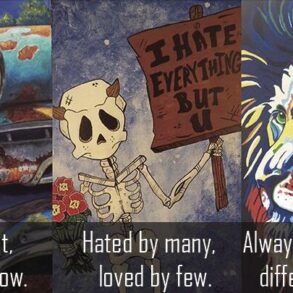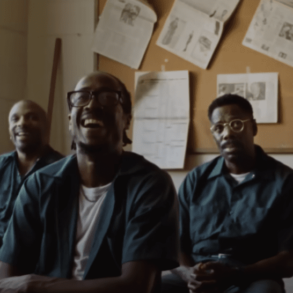At first blush, the journalist Michael Finkel’s captivating new book, “The Art Thief: A True Story of Love, Crime, and a Dangerous Obsession,” is all about heists. Over the course of 200-some snackable pages, Finkel revisits the exploits of Stéphane Breitwieser, the most prolific art robber in history. From 1994 to 2001, the Frenchman, who usually worked alongside Anne-Catherine Kleinklaus, his girlfriend at the time, swiped more than 300 works, with some estimates placing the total value at around $2 billion. Breitwieser had no desire to sell his bounty. Instead, he simply wanted to gaze on it. He saw his loot as a means toward connection. To him, the pieces were a portal to bygone eras — the late Renaissance and early Baroque, primarily — and their aesthetic pleasures.
But while the book is, as the subtitle says, a story of crime, it’s also, on a quieter level, an exploration of archiving and ownership. At the height of his infamy, Breitwieser viewed himself as an “art liberator.” He believed he could protect and appreciate historical treasures in ways that museums couldn’t. Breitwieser was delusional, obviously, and reckless. He crowded his plunder in a couple of secret attic rooms at his mother’s house, and much of it was later damaged or destroyed. But while he might not ask this explicitly, Finkel, through meticulous research and extensive investigation of trial and interview transcripts, does nudge us to consider: What is the best way to preserve the past? And how should we make it accessible?
“The Art Thief” is divided into 38 breezy chapters that trace, in a largely chronological sequence, Breitwieser’s rise and fall. Finkel opens with a vivid account of a 1997 robbery. Breitwieser and Kleinklaus, both 25 years old, are at the Rubens House in Antwerp, Belgium, and have as their target the German sculptor Georg Petel’s 17th-century ivory carving of Adam and Eve. In thrillingly granular detail, Finkel lays out the couple’s methods: Breitwieser surveys the rooms, etching floor designs and escape routes into his mind; when the area thins out, he springs into action, using his Swiss Army knife to unfasten the screws securing the piece; Kleinklaus, the sentinel, offers a faint cough whenever guards or tourists lurk nearby; once the coast is clear again, Breitwieser gets back to work.
“This is how Breitwieser progresses, in fits and starts, grasshoppering about the gallery, a couple of turns of the screw, then a cough, a couple more, then another,” Finkel writes. He describes the pair’s relationship as a kind of yin and yang: Breitwieser is skilled at detecting security flaws — fake cameras or cameras with very limited ranges, sloppy or shorthanded museum staff — while Kleinklaus has a keen eye for variables that could expose their scheme. “She’s aware, more than him, of people who appear to observe them suspiciously. He tends to be laser focused; she takes in the whole scene,” Finkel explains, adding that because this dynamic is so central to the duo’s success, Breitwieser “typically terminates a theft when she wishes, with only a little argument.”
In some ways, this line signals how the team’s crime spree will implode. Over time, Breitwieser becomes too cocky, too cavalier. During a 2001 solo mission, he snags a 400-year-old bugle, and in the process, he breaks both of Kleinklaus’s strict rules: He fails to wear gloves, and he steals from the Richard Wagner Museum, in Lucerne, Switzerland — a city where they’d had a run-in with the police before. Kleinklaus is outraged. The two return to the museum so she can erase her boyfriend’s fingerprints. But a man walking his dog notices that Breitwieser is anxiously watching the building, and he alerts an employee. Soon, two officers are loading the once-spectral art thief into their squad car.
The last third of the book — which charts the months after Breitwieser’s arrest, when the authorities attempted to figure out what happened to the stolen artwork — is particularly enthralling. In animated and colorful prose, Finkel summons the emotional intensity of a murder mystery. But old masters, not bodies, are missing. Breitwieser believes that his mother, Mireille Stengel, disposed of the objects to protect him after learning that he’d been arrested. Some, she tells the police, she chucked into the Rhône-Rhine Canal. Others, she burned in a forest — Breitwieser imagines that, in a clearing, “the heat climbs and paint runs like mascara, streaming over the picture frames,” Finkel writes. While Kleinklaus and Stengel either avoided prison time or served just a few months, Breitwieser spent several years in jail for his crimes.
It’s here, in the final section of the book, that Finkel scratches at especially interesting and ambitious questions. During his trial, Breitwieser characterized himself as a “temporary custodian” of the stolen art; he was going to return the pieces, eventually. The Swiss prosecutor, however, was having none of it — and cast Breitwieser as a menace who inflicted irreparable damage on heritage and culture. The director of a museum that Breitwieser had robbed took the stand and said, “More than the monetary value is the sentimental value” and “the relationship between the object and place.” She went on: “We can’t transform our museum into a safe. We serve the public.”
But how best to serve the public — to nurture a communal appreciation of our yesterdays? These courtroom exchanges surface some of the primary issues museums have been wrestling with in recent years. Though these institutions are seen as guardians of the past, they aren’t free of controversy. Problems abound.
For one: access. The price of admission can keep people away from the shared history they’re supposed to enjoy. (There’s a reason many were upset when New York’s Metropolitan Museum of Art implemented a new entry fee in 2018.) Another issue is deciding what belongs on display in a museum. No site can include everything, of course. And to archive is, necessarily, to make difficult choices. Even so, the items accessible to the public suggest a lot about which slices of the past are apparently the most valuable or significant.
Breitwieser’s obsession was decidedly Western: “the exuberant European oil works that blossomed at the end of the Renaissance and the dawn of the Baroque,” Finkel explains. Despite that, Breitwieser’s story still speaks to questions of atonement, not least because it reminds us that those who claim pieces don’t always have the right to possess them. Dozens of the works he stole have never been found. They’re probably lost forever — he can never return them. By contrast, numerous museums today are confronting the fact that many of their pieces have had journeys marked by colonialism, and they’re starting to heed pleas for repatriation.
Finkel doesn’t touch on these themes directly. But he doesn’t have to. The invitation to probe is right there, for instance in how he depicts regional museums, which “will permit close access to priceless objects,” and “the public, in turn, will leave these objects undisturbed, respectful of the idea that works of communal heritage, often suffused with spiritual significance and a sense of place, should be open and accessible to all.” So “The Art Thief” is about heists, yes, but it also speaks to much more.
The Art Thief
A True Story of Love, Crime, and a Dangerous Obsession
By Michael Finkel
Knopf. 222 pp. $28
This post was originally published on this site be sure to check out more of their content.








